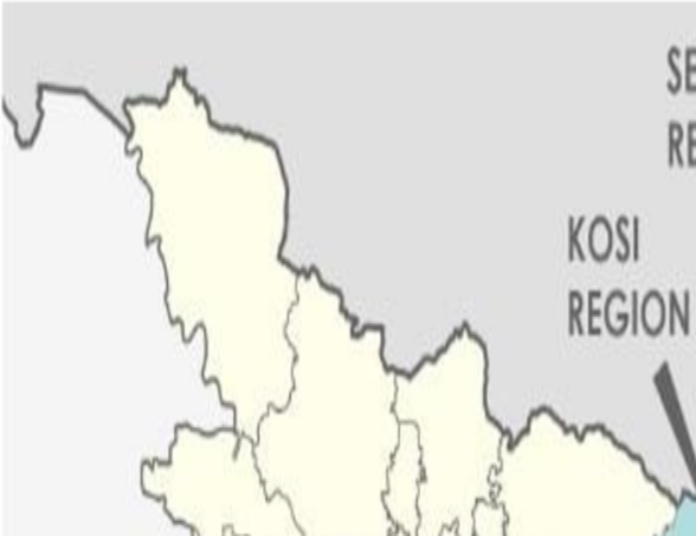Sami Ahmad, TwoCircles.net
Patna: Four districts of Bihar’s Seemanchal region (Kishanganj, Katihar, Purnea and Araria) have reported an above-average percentage of name deletions in the draft voter list released on August 1. This follows the completion of the Special Intensive Revision (SIR) of the electoral rolls across the state.
The total number of voters in these four districts, as per the Election Commission of India (ECI), stood at 78,11,890 as of June 24, 2025. The newly released draft list shows a removal of 7,61,914 names, bringing the current total to 70,49,976 voters. The deletion date, therefore, amounts to a 9.75%, which is 1.44% higher than the state’s average of 8.31%.
These districts have long faced scrutiny, given their high concentration of Muslim voters and their socio-economic vulnerabilities. During the SIR, suspicions and rumours circulated about the presence of “infiltrators” who are often attributed to unnamed sources within the ECI. However, the commission has not confirmed a single case of illegal foreign immigration in these areas till date.
Bihar had a total of 7,89,69,844 registered voters as of June 24, this year. The draft list shows that 65,64,075 names have been removed (a reduction of 8.31%). The ECI attributes these deletions to three reasons: individuals confirmed as deceased, those who have permanently relocated or were unavailable during enumeration and duplicate entries appearing in multiple voter lists.
Leader of the Opposition in the Bihar Assembly, Tejashwi Yadav, who belongs to the Rashtriya Janata Dal (RJD) has raised concerns about this process. He questioned the ECI’s methodology and transparency in a public statement, asking what evidence or documents were collected to verify the status of the 65 lakh voters declared deceased, migrated or absent.
“What is the basis for the Election Commission claiming that 36 lakh voters have been transferred or are temporarily migrated?” he asked on social media.
He further accused the ECI of removing names without prior notice, targeting specific communities and undermining democratic integrity.
The percentage of removals varied from one district to another. In many districts, the rate aligned closely with population data, while others showed deviations. Smaller districts generally reported lower removal rates.
Kishanganj, the district with the highest Muslim population in the state (67%), had 1,231,910 registered voters as on January 24. Following the SIR, 1,45,668 names were removed, making the deletion rate to stand at 11.82%. The new draft list puts the total number of voters at 1,086,242. This is the second-highest removal rate in the Seemanchal region.
Congress’ Dr Mohammad Jawaid represents the constituency in the Lok Sabha (Lower House of Parliament).
Purnia has recorded the highest removal in Seemanchal at 12.08%. On June 24, there were 2,268,431 registered voters. After the removal of 2,73,920 names, the voter count fell down to 19,94,511. The district’s Lok Sabha representative is Rajesh Ranjan, also known as Pappu Yadav, who won as an independent candidate with support of the Congress.
In Katihar, represented by veteran Congress leader Tariq Anwar, the voter list has undergone a deletion rate of 8.27%. The district had 22,29,063 voters. The draft list now includes 20,44,809 names after the removal of 1,84,254 voters. This rate is in line with the state average.
Araria reported the lowest removal rate in Seemanchal at 7.59%. With 20,82,486 voters on June 24, 1,58,072 names have since been removed. This Lok Sabha constituency is represented by Pradeep Kumar Singh of the Bharatiya Janata Party (BJP).
The 9.75% deletion rate in Seemanchal stands out against the state average and has led to broader questions. The ECI data highlights that Purnia and Kishanganj are especially impacted, while Araria appears more stable in terms of voter retention.
Given Kishanganj’s demographics and socio-economic conditions, the high deletion rate here requires thorough examination to maintain public trust in the revision process.
CPI (ML) State Secretary Kunal expressed concerns about the transparency of the SIR process. He said there are growing fears that names of poor individuals have been disproportionately removed. “We have such reports from many places,” he said, demanding that the ECI publish the list of all 65 lakh voters declared dead, permanently displaced or untraceable.
While Seemanchal stands out, several other districts across Bihar have also undergone substantial voter list changes.
In Patna, which has the highest voter population in the state (50,47,194 as of June 24), 3,95,500 names have been removed. However, the removal rate in the state capital remains below the state average at 7.84%.
Madhubani recorded the second-highest overall removal rate at 10.44%. The district had 33,76,790 voters before the revision, and 3,52,545 names have now been deleted.
Similarly, East Champaran had 36,89,848 registered voters, of which 3,16,793 were removed. This marks a removal rate of 8.59%, aligning more closely with the state’s average despite its higher population.
Muzaffarpur saw a removal of 2,82,845 names out of 34,86,215 voters, marking an 8.11% rate.
In Samastipur, 2,83,955 names were removed from a total of 31,45,370 voters, resulting in a 9.03% deletion rate.
Saran reported a removal rate of 8.27%, with 2,73,223 names deleted from its 31,34,108 registered voters.
Darbhanga had 30,00,167 voters and saw 2,03,315 deletions, a reduction of 6.78%.
Bhagalpur recorded a 10.19% removal rate, with 2,44,612 names deleted from its 24,00,414 voters.
In Nalanda, the home district of Chief Minister Nitish Kumar, the removal rate is 5.98%, one of the lowest in the state. There were 23,16,081 voters before the SIR, and 1,38,505 names have now been removed.
Gaya, the home district of Union Minister Jitan Ram Manjhi, had 31,47,156 voters. The SIR resulted in the deletion of 2,45,663 names, giving it a removal rate of 7.80%.
Sheikhpura, the state’s smallest district, recorded the lowest number of deletions both in absolute terms and percentage, with 26,256 names removed (5.1%).
The highest percentage of deletions across Bihar was recorded in Gopalganj. Here, 3,10,363 names were removed from a total of 20,55,845 voters, amounting to a 15% removal rate.


